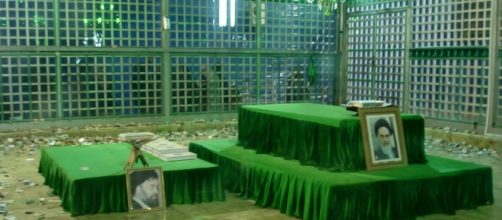IS attack Iranian Parliament and Khomeini's Mausoleum
Islamic State (IS) it seems despite being beaten back on the battlefield which in turn has made its territory shrink and with its capital, under attack, is still able to inspire attacks or launch planned attacks. Notably, with regards to the attacks in Manila and in the UK, it was unknown whether IS actually were behind these attacks or they were the inspiration behind them.
However, it is clear that IS is on the back foot and they will claim any attack as one of their own even if it is just to keep up their prestige as still being a viable threat to its enemies.
Certainly, despite valiant efforts in Iraq to recapture Mosul the city is still a thorn in the side of the Iraqi government and with the US backed forces gaining ground, IS have essentially made a suicidal defence of their last bastion in Iraq.
Certainly, the attacks on the Iranian Parliament and Ayatollah Khomeini's Mausoleum will be seen as a victory of sorts for the Islamic State. The group threatened to hit out at targets in iran and in this, it seems their threat has become a reality.
It would appear that as IS loses land in Iraq and Syria the group will switch more and more to inspiring others to launch attacks on its behalf or plan attacks fighting in the shadows like Al-Qaeda.
Islamic State's hatred of the Shia
One reason why IS was set up was that of Sunni Muslims grievances with the Shia-led government in Baghdad which it accused of treating Sunni Muslims less favourably. There does seem to be some evidence of this because once when Saddam ruled Iraq, Sunnis dominated Shia but since Saddam's fall during the 2003 US/UK invasion, the boot so to speak has been on the other foot with the Shia dominating instead.
This has led to the growing influence of Iran in Iraqi affairs and this is something many Iraqi Sunnis could not tolerate hence them joining Islamic State. It is estimated though that large numbers of Iranian Sunnis not happy living with a Shia government in Tehran have also joined IS.
Amongst the groups treated terribly by Islamic State besides Yazidis, other Sunni Muslims, and Christians are the Shia.
Whether they were captured Shia fighters or civilians, this group has been singled out for harsh treatment, as Islamic State being of the Sunni doctrine hate the Shia.
The fallout between Sunni and Shia
The split between Sunni And Shia Islam occurred after the death of the Prophet Mohammed in 632 when neither side could agree on a successor. Both sides did eventually agree on a successor but not among themselves. Both had two men competing for the job of leading the faithful which led to the split between the two ideologies in Islam, which has remained ever since.
Islamic State may not be the greatest Sunni enemy Iran has because across the Persian Gulf sits Saudi Arabia; probably the most powerful Sunni Muslim state in the region if not the world.
Both Iran and Saudi Arabia favour different sides in the Yemen war which, compared to Syria and Iraq, seems to have become the forgotten war.
With Iran being involved in the Syrian and Iraqi war you can also bet Saudi Arabis also has its fingers in the pie backing which ever side it sees fit as carrying out Saudi influence in the region. Both Iran and Saudi Arabia are extreme versions of Shia and Sunni and hate each other with a passion and as a result they make this area of the world very volatile indeed.


